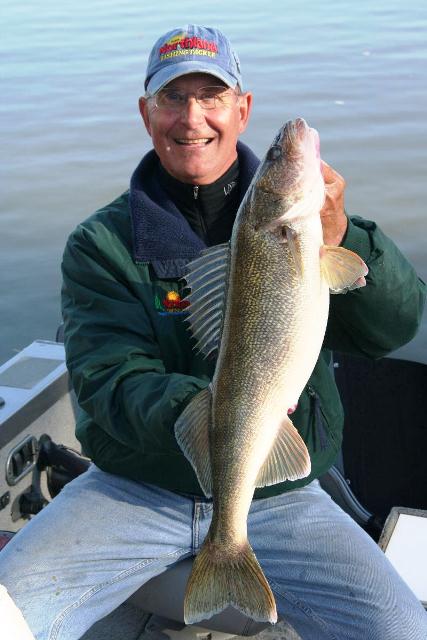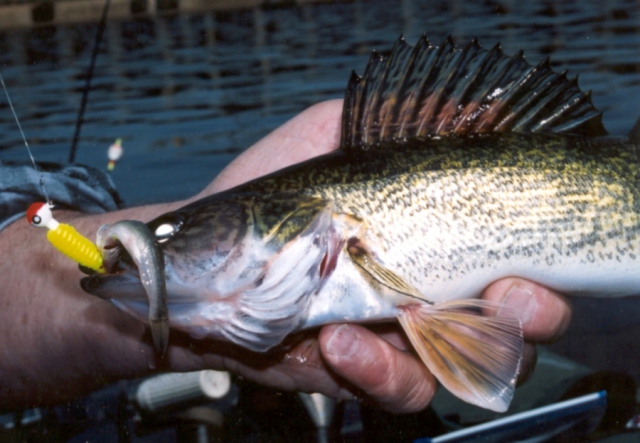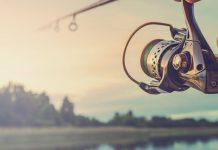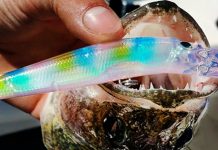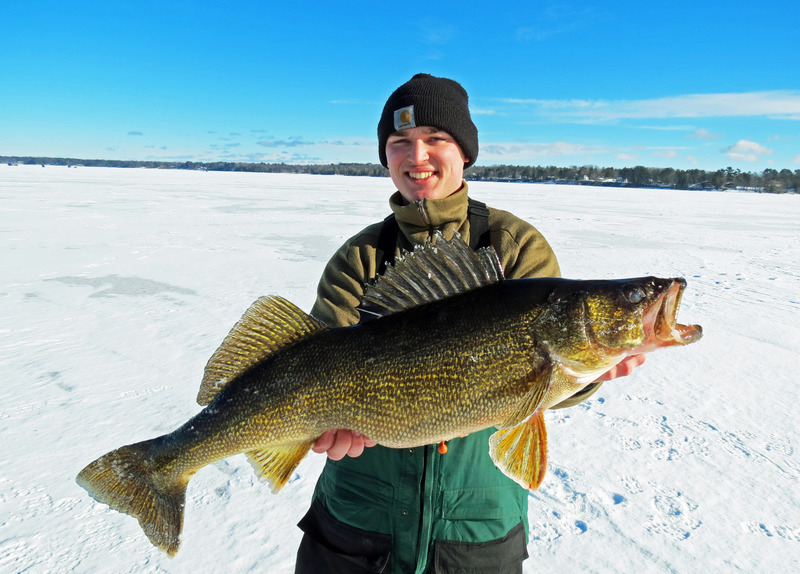It’s just past Labor Day and for many Wisconsinites it’s the end of the fishing season. But, to the serious angler much of the really good fishing and the time of the year for catching big fish is just beginning, or will within a matter of a few weeks. This is why I tell anglers to keep fishing and wait until late October or November to put their boats away for the year. It’s a tough time for the serious outdoors person because Wisconsin’s many hunting seasons are just opening, or will be in the near future and what does one do, fish or hunt ? How about a little of both?
There is river action for some of the largest walleyes of the year right up to Thanksgiving and even beyond because there is no closed season on the Wisconsin River and it doesn’t freeze over. This fall river bite occurs throughout the fall in all of the Midwest’s medium to large rivers which include the Wisconsin River and Mississippi River at towns with dams like Sauk City, Wisconsin Dells, Castle Rock, Petenwell, and Nekoosa on the Wisconsin River and Dubuque, Prairie du Chien, Genoa, Ferryville, LaCrosse, and Red Wing on the Mississippi River.
Wisconsin walleye anglers are lucky to have two major river systems that have all the necessary ingredients for very good walleye fishing. Both the Mississippi and Wisconsin Rivers have quality walleye and sauger populations with dams up and down their waters. Another good thing about fishing these rivers is that they are open year-round for angling. The dams on these rivers serve as impassable structures for the migrating walleyes and concentrates fish in larger numbers below and in the general areas of the dams in the fall. River walleyes can be in deep water, shallow water, or anything in-between depending where their forage or food is located. Depth is not the driving force for river fish as it is for lake walleyes. What drives these river fish and determines their location is the current flow in the river. These fall hot spots are not much different than the spring walleye locations where anglers fish. The areas below the dam that hold walleyes include; current breaks, wing dams, river bends and turns, points, bridge abutments, feeder creek mouths, eddies, islands, bottom depressions, rock piles, timber and wood, and deep holes. The deep water holes (scour holes made during high water periods below a dam) will hold large numbers of fish this time of the year. Try fishing all over and around the deep scour holes because it will hold numbers of fish and also some large walleyes.
Remember, that river fish are constantly fighting current, so they must use the above mentioned structures for breaking the current and saving their energy. Typically, a walleye likes to wait behind current breaking structures and ambush any food (forage) that passes or floats by them in the river’s current. The walleyes or saugers can then dart out, feed quickly, and return to their holding area which is outside the main flow to conserve their energy. The locations are easy to find as you learn to “read” the river and the techniques to use to catch these fish. The fishing techniques are relatively simple to catch these fish.
Living on the Wisconsin River allows me to daily see what the river flow is and then plan my fishing schedule for the day. I try to concentrate my fishing relatively close to the dam and spillway locations where the walleyes and saugers concentrate as the fall progresses and they migrate up the rivers. Most of my fall fishing will be done within a mile or so of the dam and this can apply to most river dams during the fall. As the river water cools, most anglers make the switch back to using live bait presentations. This means vertical jigging with minnows and as the fall progresses using larger fatheads and chubs trying to match the size of the years forage fish. The baitfish and fish of the year have all grown during the summer, so be sure to use larger bait. If jigging, you’ll most likely be anchoring or using your trolling motor to slowly move while working your bait. When vertical jigging, let the jig fall to the bottom and then lightly lift and drop the jig. Lifting the jig (about 6 inches to a foot) attracts the walleyes and dropping the jig allows the river’s flow and current to give the jig action as it falls back to the bottom. Hair jigs and jigs with plastic tails or Gulp and Powerbait work well in the rivers current too, if you’re not into using live bait.
Another trick that works is to add some bulk to the jig in the form of a piece of plastic on the jig’s collar or a whole twister tail on the jig and minnow combo. This bulks up the jig and slows its fall to the bottom. Most strikes usually occur when the jig is falling. The Bait Rigs Slo-Poke jig works wonders in rivers with its slow fall, stand-up style, and wide hook gap. Colors can vary, so be sure to have a wide assortment of styles, colors, and sizes. You want to use as light a jig as possible while still being able to maintain a vertical presentation. You can also cast and retrieve a jig slowly while anchored using the basic jig/minnow combo or just a jig and twister tail. I suggest using a Kalin’s brand of plastic in the 4 or 5 inch size. If you’re fishing Wisconsin waters, you can legally use three rods. The ideal set-up while anchored is to vertically jig with one rod, cast with another, and put the third rod in a rod holder as your “dead” rod. Sometimes, I’ll rig my dead rod with a plain hook, a colored bead, and a split shot about 12 to 18 inches above the hook. I’ve had days when the dead rod catches all the fish! You have to be prepared for whatever the walleyes want on the day that you’re fishing. Another thing to remember is to keep your presentations slow as the fall water cools.
I’ve found that Berkley Fireline works well in these river situations. The “superline” cuts the water and allows you to feel the lightest bites. I suggest using the 14 pound test line which has the diameter of 6 pound test line. The strength of the Fireline allows you to pull out of most snags that you may encounter. To compensate for the lack of stretch in Fireline, try using a medium action rod like a G. Loomis SJR 721 which gives you the shock absorption you need for playing big river walleyes.
Another good fall walleye presentation is the use of a three-way swivel. Three-way rigs attach your main line to two others, one with a weight as a dropper (or a heavy jig and minnow) and the other line to a lipless crankbait. Slowly troll up-river with this presentation and at times this rig will be your big walleye ticket!
I ran into Conservation Warden John Buss and he said that he had seen a few anglers already catching walleyes below the Prairie du Sac Dam. But, he agreed that the river had to cool down into the 40’s and 50’s to really get the fish going and active. Some of the year’s best fishing is yet to come, so don’t winterize and put that boat away yet. Try river fishing below one of the many dams this fall and you’ll have little or any competition and a chance of a trophy fish. The fish will be there, will you?

